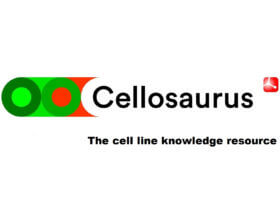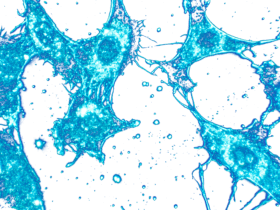The following cell lines have been flagged as potentially misidentified. We need your help to determine whether they should be added to the ICLAC list of misidentified cell lines. If you hold these cell lines in your laboratory, please contact us.
Material or data that could be helpful include:
- Tissue or DNA from the original donor
- Low passage cell line stocks
- Genotypic data relevant to authentication – STR, SNP, next generation sequence, karyotype
- Phenotypic data relevant to characterization – growth rates, drug response etc.
We welcome an open dialogue and the opportunity to compare your authentication test results to international datasets. In some cases, dialogue can lead to discovery of authentic stock, and this is always a welcome outcome.
Nasopharyngeal carcinoma (NPC) cell lines
AdAH and NPC-KTAdAH and its derivative NPC-KT were originally thought to be established from a human nasopharyngeal carcinoma (1). Work has now been performed using RNA sequencing (RNA-seq) analysis to show that AdAH and NPC-KT carry HeLa genomic material (2). Testing has been reported from a single source; it is possible that authentic stocks exist elsewhere. More data needed include:
|
HONE-1HONE-1 was originally thought to be established from human nasopharyngeal carcinoma (3). Work has now been performed using RNA-seq analysis to show that samples of HONE-1 carry HeLa genomic material (2). STR profiling of HONE-1 also shows that cells contain STR loci from HeLa, but the result differs from the typical HeLa STR profile (4-6). Differences could be explained by the presence of a somatic hybrid, although other explanations are possible. More data needed include:
|
HNE-1 and HNE-2HNE-1 and HNE-2 were originally thought to be established from human nasopharyngeal carcinoma (3). STR profiling of HNE-1 and HNE-2 now shows that cells contain STR loci from HeLa (4,6), including a specific allele that is unique to HeLa (D13S317, allele 13.3). However, the results differ from the typical HeLa STR profile (4,6). More data needed include:
|
References for NPC Cell Lines
(1) Takimoto T, Ogura H, Ohno S, Umeda R, Hatano M. Tumorigenicity of nasopharyngeal carcinoma hybrid cell line. J Natl Cancer Inst 1984; 73: 711-5. PMID: 6088881.
(2) Strong MJ, Baddoo M, Nanbo A, Xu M, Puetter A, Lin Z. Comprehensive high-throughput RNA sequencing analysis reveals contamination of multiple nasopharyngeal carcinoma cell lines with HeLa cell genomes. J Virol 2014; 88: 10696-704. PMID: 24991015.
(3) Glaser R, Zhang HY, Yao KT, Zhu HC, Wang FX, Li GY, Wen DS, Li YP. Two epithelial tumor cell lines (HNE-1 and HONE-1) latently infected with Epstein-Barr virus that were derived from nasopharyngeal carcinomas. Proc Natl Acad Sci U S A 1989; 86: 9524-8. PMID: 2556716.
(4) Chan SY, Choy KW, Tsao SW, Tao Q, Tang T, Chung GT, Lo KW. Authentication of nasopharyngeal carcinoma tumor lines. Int J Cancer 2008;122: 2169-71. PMID: 18196576.
(5) Yu M, Selvaraj SK, Liang-Chu MM, Aghajani S, Busse M, Yuan J, Lee G, Peale F, Klijn C, Bourgon R, Kaminker JS, Neve RM. A resource for cell line authentication, annotation and quality control. Nature 2015; 520: 307-11. PMID: 25877200.
(6) Ye F, Chen C, Qin J, Liu J, Zheng C. Genetic profiling reveals an alarming rate of cross-contamination among human cell lines used in China. FASEB J 2015, Epub Jun 26. PMID: 26116706.
















